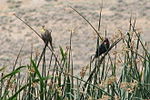2011 Reno Air Races crash
2011 in NevadaAviation accidents and incidents at air showsAviation accidents and incidents in NevadaAviation accidents and incidents in the United States in 2011Filmed deaths in motorsport ... and 3 more
North American P-51 MustangSeptember 2011 events in the United StatesUse mdy dates from January 2021

On September 16, 2011, The Galloping Ghost, a highly modified North American P-51D Mustang racing aircraft, crashed into spectators while competing at the Reno Air Races in Reno, Nevada, killing the pilot, James K. "Jimmy" Leeward, and ten people on the ground. Sixty-nine more people on the ground were injured. It was the third-deadliest airshow disaster in U.S. history, following accidents in 1972 and 1951.
Excerpt from the Wikipedia article 2011 Reno Air Races crash (License: CC BY-SA 3.0, Authors, Images).2011 Reno Air Races crash
Maryland Street, Reno Stead
Geographical coordinates (GPS) Address Nearby Places Show on map
Geographical coordinates (GPS)
| Latitude | Longitude |
|---|---|
| N 39.660311111111 ° | E -119.87800277778 ° |
Address
Maryland Street
Reno, Stead
Nevada, United States
Open on Google Maps






